What size TV should you buy?
What size TV do I need? How to figure out the right size of TV for your space and comfort.
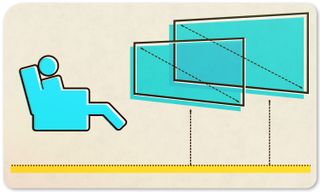
We've all been there before, especially today as TVs are getting bigger, in a rut and not knowing really what the best size TV might be for your particular set up. We're here to help you uncover what size TV should you buy, unlocking the fullest potential of your home entertainment setup with a display that's worthy for everything from "House of the Dragon" to even the 2024 Paris Olympics.
As TV testers and reviewers, we know exactly where to look when it comes to this question, as we see all kinds of varied displays, each of which having their own many sizes and potentials. You might not think there would be a major difference between TV sizes, but actually there are some key variances, namely in dimming zones on Mini-LED TVs.
To get the best performance, too, you'll want to sit at a particular range in front of the TV. This should help to narrow down the options as it will depend on where you place the display and how far away it is from your sitting location. There's a handy chart below to help you better determine what size TV show you buy, but we'll also be going in depth on the subject for those curious.
| Distance from TV | Minimum screen size | Sweet Spot | Maximum screen size |
| Between 2 and 3 feet | 25 inches | 32 inches | 40 inches |
| Between 4 and 5 feet | 30 inches | 42 inches | 50 inches |
| Between 6 and 7 feet | 45 inches | 55 inches | 70 inches |
| Between 8 and 9 feet | 60 inches | 75 inches | 85 inches |
| Between 10 and 12 feet | 75 inches | 85-inches | 98 inches |
The technical answer may not always make sense for your personal space and eye comfort. Therefore, we really recommend measuring the space to see what will look good there and what feels like it's comfortable before buying a new TV. (Moving into a dorm? Read our guide on what TV size will you need for your dorm room.)
- Check out the best TVs we've reviewed
- TV shopping? Everything you need to know about buying a TV
- The best TV mounts to hang your set on the wall
Now that you know which size TV you should buy, we’ve pulled together all our top tips for choosing the right size TV for you, your room, your needs, and your budget. This guide is intended to help you with your primary, family room television, but the same principles will work for your bedroom, den and office.
What size TV do I need? Quick Tips
Why you can trust Tom's Guide
Understand screen size. TV screens are measured diagonally from corner to corner, so a 65-inch TV is closer to 55 inches wide. Bigger is better, in most respects — it's more immersive and easier to see, not to mention more impressive when showing off to the neighbors. But if the screen's too big, it won't fit in the space you have.
Know your resolution. TVs today offer three resolution options – 1080p, 4K and 8K. We recommend 4K for pretty much everyone, but the resolution will change how close you can sit to a set and how expensive it will be.
Figure out room size and position. Rooms don't get bigger to accommodate larger TVs, so find the right size for your space.
Screen size and resolution
First, remember that TV screens are measured diagonally. So a 55-inch screen measures 55 inches from one upper corner to the opposite lower corner. But the actual dimensions will be different, measuring roughly 49 inches wide and 29 inches tall.
Screen size has a direct relationship with the optimal viewing distance. Larger screens are best watched from farther back; otherwise, you can find yourself unable to see the whole picture, or experience unwanted distortions and color issues from sitting too close.
Next, you have to consider the resolution of the TV. TVs today offer three resolution options — 1080p, 4K and 8K. The higher the resolution, the closer you can sit before you'll notice pixelation in an image. That means you can sit closer to a 4K TV (3840 x 2160) than you could a 1080p TV.
We recommend 4K for pretty much everyone, but the resolution will change how close you can sit to a set and how expensive it will be. Here's how the main resolution options break down:
1080 or Full HD: Display resolution measuring 1920 x 1080 pixels, used in modern television broadcasts, cable and satellite TV, Blu-ray media and available broadly in free and paid streaming services. You'll still see these, especially when you go looking for the cheapest TVs on sale. Full HD is a good choice if you're getting a TV with an extra-small screen, but for anything larger than 40 inches, you should be getting 4K.
4K (Ultra HD): Display resolution measuring 3840 x 2160 pixels, commonly referred to as Ultra HD or UHD. The current standard in smart TVs, offering 4x the resolution of full HD. We strongly recommend 4K for everybody, in most situations.
8K (Ultra HD): The next step in resolution is 8K, or 7680 x 4320 pixels. It's also called Ultra HD (just like 4K), so don't be confused. There's also a severe lack of 8K content, so we recommend skipping 8K this year. Even on sale, it's more expensive than an equivalent 4K TV.
Check out the top TV models in either resolution:
The best 4K TVs | The best 8K TVs
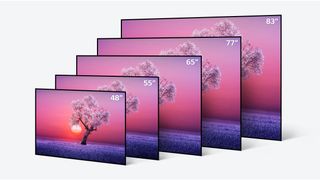
Room size and TV position
Rooms don't get bigger to accommodate larger TVs, so find the right size for your space. Screen size has a direct relationship with the optimal viewing distance. Larger screens are best watched from farther back; otherwise, you can find yourself unable to see the whole picture, or experience unwanted distortions and color issues from sitting too close.
Consider the room in which the TV will sit. As long as the furniture in that room is not permanently attached to the floor — and you're willing to move it — then you have some flexibility in the size of the TV you can get.
There’s also the question of whether you plan to set up the TV using the included stand or use a wall-mount to hang it. Using the included stand to set the TV on a table or entertainment unit will place the set closer to the viewer, shortening the viewing distance. Be sure to account for both the depth of the TV stand and whatever furniture you plan to set it on. Some sets have relatively narrow stands, but others, like the 65-inch model seen in our Samsung QN90A Neo QLED TV review, extend back nearly 9 inches with the stand attached. Similarly, the 65-inch model from our TCL 6-Series Roku TV (R635) review is 13.7 inches deep, despite the TV having a 2.8-inch thick chassis.
Hanging the TV on the wall, on the other hand, can add a foot or more to the viewable distance, which can be the difference between a 60-inch TV and a 72-inch model. (Check out the best TV mounts for our favorite mounting hardware.) Depending on what sort of mount you use and the thickness of the TV, your screen will still sit a few inches from the wall, but the specifics will vary from one model to the next. Some, like the LG G1 OLED TV are designed to mount flush against the wall, but most will still need some space to accommodate mounting hardware.
MORE: Best Viewing Angle and Height to Mount Your TV
Best TVs by size
We review TVs of all sizes, and while the majority of our TV reviews center on 55- and 65-inch models, some of the best TVs we've reviewed are also available in smaller and larger screen sizes.
You can also see our favorites for a wide range of sizes by checking out our size-specific guides to the best TVs.
Smallest smart TVs | Best 43-inch TVs | Best 50-inch TVs | Best 55-inch TVs | Best 65-inch TVs | Best 70-inch TVs | Best 85-inch TVs
Here are some of our favorites, hand-picked to give you the best performance at some of the common screen sizes, from small to extra large.
More: How to buy the best outdoor TV
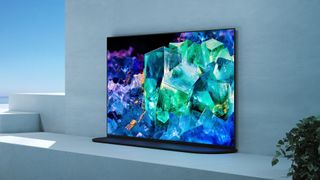
Specifications
Reasons to buy
Reasons to avoid
By any standard, the Sony Bravia XR A95K OLED is a remarkable TV — and often, it’s far better than that. This set, which sits at the top of Sony’s expansive TV lineup, unites the industry’s defining technologies and Sony’s own groundbreaking processing and picture enhancements to deliver superlative performance in every area. And our own test results back this up.
The color and brightness on the Bravia XR A95K are dazzling. Unexpected but genuinely useful smart features transform everything from how you interact with the screen, how you make picture adjustments, and even what you do if you lose your remote control. Perhaps most important, this Sony OLED TV looks and sounds like a dream, no matter what you watch on it, making everything a transcendent viewing and listening experience.
The question with the A95K, then, isn’t whether it’s one of the best TVs you can buy. It’s whether it is the best TV you can buy. In our opinion? Yes, yes it is.
Read our full Sony Bravia XR A95K review.
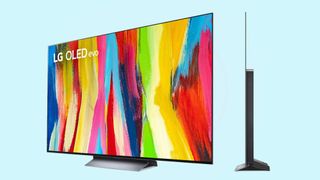

Specifications
Reasons to buy
Reasons to avoid
When it comes to 65-inch TVs, the LG C2 OLED is the top of the pack. Not only is it the best OLED TV thanks to an impressive display panel, but a premium design, maximum versatility and great smart TV platform hit all the high marks, too.
The panel itself is impossibly thin, measuring 0.1-inch thick across the top half of the TV. The component compartment extends out on the bottom half of the back chassis, but it’s still very sleek overall.
We can’t say our test results for this LG C2 OLED TV review showed significant improvement over last year's C1 OLED (found lower on the list) — but, to be fair, there wasn’t much room to improve. Instead, what makes this one of the best TVs of the year is that it offers fantastic picture quality for the price.
Read our full LG C2 OLED review.
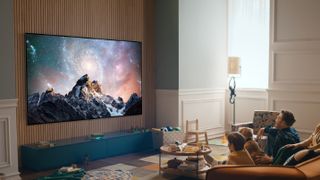
Specifications
Reasons to buy
Reasons to avoid
The 77-inch LG G2 OLED TV is easily the best 4K OLED TV made by LG. It has LG's second-gen OLED evo technology and improves upon last year's G1 in almost every regard. It's the updated version of LG's superb Gallery OLED, boasting a premium 20 millimeter-thick design and sleek flush-to-the-wall mounting setup. We just wish it went further to solve OLED's very minor flaws; in our testing we found that the LG G2 reached 590.54 nits — way above the G1's 412.05, albeit not quite on a par with the Sony A80J's 713.65 result.
That said, our review found the LG G1 OLED is still an impressive OLED set, and LG has even knocked the price down a bit while updating almost everything else about the set: its design is also something to behold, with a minimalistic silver frame that gives it a near-bezel-less appearance. It's also well equipped with ports, sounds better than almost any OLED we've ever heard and offers a full-featured smart TV platform that should satisfy most households, without quite being the best. The LG C2, which we're currently testing, may end being a better purchase for most people, but until then this is the best OLED TV you can buy.
Read our full LG G2 OLED TV review


Specifications
Reasons to buy
Reasons to avoid
The LG C2 OLED TV is this year’s set to beat. Not only is it the best OLED TV thanks to an impressive display panel, but a premium design, maximum versatility and great smart TV platform hit all the high marks, too.
What’s more, this C series lineup is LG’s largest in terms of size options — the configurations span from 42- to 83-inches, all of which sport full arrays of HDMI 2.1 ports. Most also feature LG’s evo OLED panel, which was first introduced on the LG G1 OLED TV and now looks to upgrade the C2’s performance.
We can’t say our test results for this LG C2 OLED TV review showed significant improvement, but to be fair, there wasn’t much room to improve. Instead, what makes this one of the best TVs of the year is that it offers fantastic picture quality for the price — exactly what you’d expect from LG’s best-selling OLED TV series.
Read our full LG C2 OLED review.
What's comfortable for you?
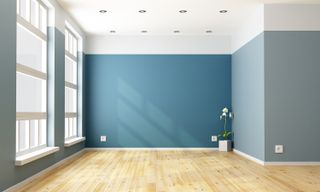
The typical TV-watcher sits 9 feet from the screen, which brings us to the comfort factor: Most people like to sit far enough away from a TV that the pixels on the screen can't be distinguished. So, feel free to experiment with the placement of your new TV, and it never hurts to go a little bigger than what you think you'll need.
Whether you're shopping for a TV for your home or a home for your TV, you can now figure out the perfect viewing distance with just a couple of quick calculations.
If you've narrowed down your TV shopping by brand, price range or screen size, check out our picks for the best TVs in each.
Best TVs | Best 4K TVs | Best smart TVs for streaming | Best TVs for gaming
The best TVs under $1000 | The best TVs under $500
Best TV brands | Best Samsung TVs | Best TCL TVs | Best LG TVs | Best Roku TVs | Best OLED TVs | Best QLED TVs | Best 8K TVs | Best HDMI 2.1 TV | Best TVs with ATSC 3.0 | Best TVs with Chromecast
The smallest smart TVs | Best 43-inch TVs | Best 50-inch TVs | Best 55-inch TVs | Best 65-inch TVs | Best 70-inch TVs | Best 75-inch TVs | Best 85-inch TVs
And don't forget to watch out for the latest TV reviews.
Sign up to get the BEST of Tom's Guide direct to your inbox.
Get instant access to breaking news, the hottest reviews, great deals and helpful tips.

Nick Pino heads up the TV and AV verticals at Tom's Guide and covers everything from OLED TVs to the latest wireless headphones. He was formerly the Senior Editor, TV and AV at TechRadar (Tom's Guide's sister site) and has previously written for GamesRadar, Official Xbox Magazine, PC Gamer and other outlets over the last decade. Not sure which TV you should buy? Drop him an email or tweet him on Twitter and he can help you out.
- Brian Westover
- Ryan EppsStaff Writer